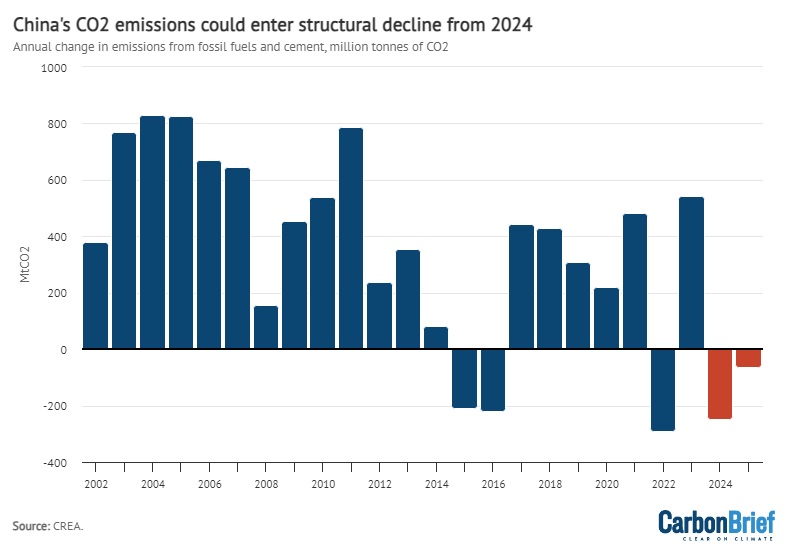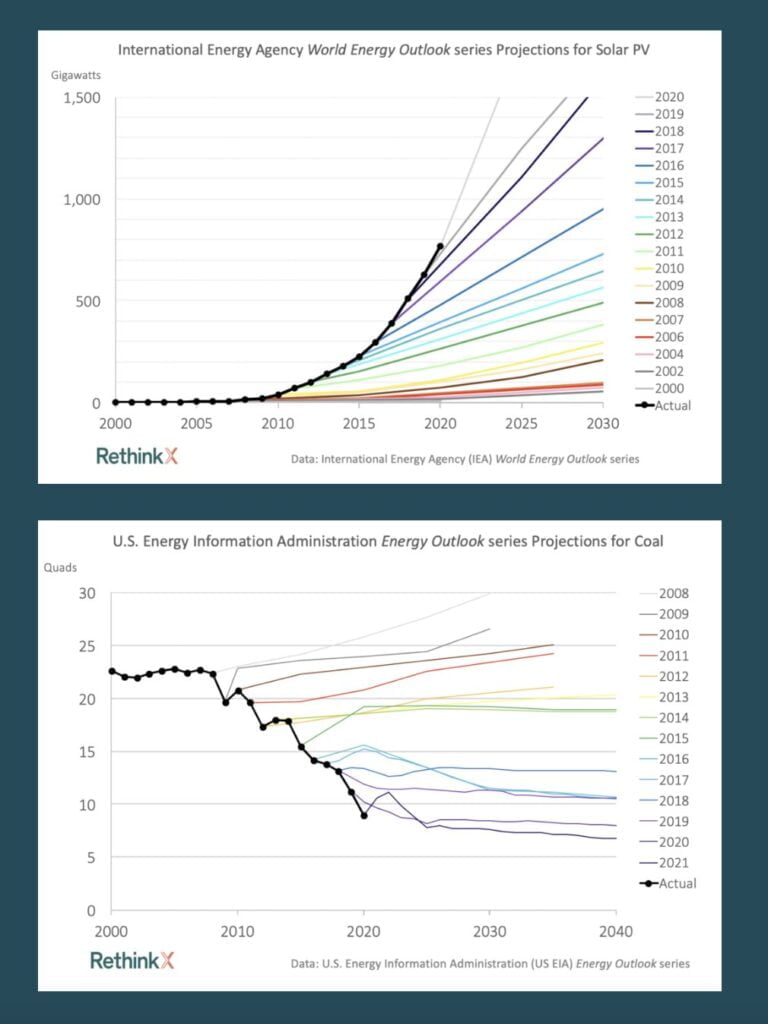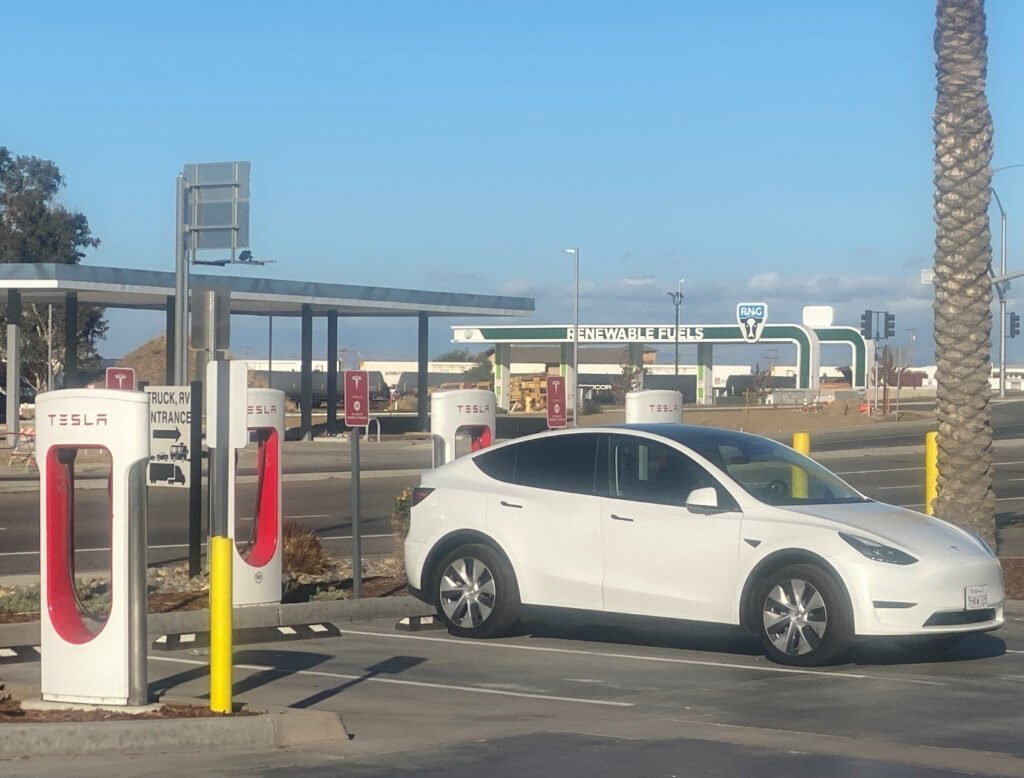Some cautiously good news on emissions
Opinion by Rob McCann , Sustainability Specialist.
Emissions Trajectory – the good, bad and (slightly) encouraging
I think it’s time we all dabbled in some slightly positive news, especially when it comes to the climate. Though this is not to take away from the dire circumstances which we find ourselves in, it may comfort some EcoNetwork Port Stephens followers and concerned citizens who are feeling nihilistic about the future and our emissions trajectory. This is all very hard to untangle, so here is a bit of a snapshot of what’s happening emissions-wise.
The bad
First though, a quick pulse check. At the time of writing this article, we are now at 422ppm of CO21. Recorded at Mauna Loa in Hawaii, this is the highest since the Pliocene several millions of years ago.
There is some debate as to whether we have already shot past the 1.5°C (we have already by some measures2) additional warming we agreed to limit in Paris, or whether we will even know exactly when we went past this limit, all things considered. Regardless, the current odds are at about 50/50 that we will fully overshoot this next decade, not long after the Brisbane Olympics, even if we pick up our game3. This is bad news, especially if you consider that the warming we already experience today is from emissions built up over previous decades and are still being absorbed and partly ‘hidden’ in the world’s oceans.
Most of the extra heat we are adding accumulates in the oceans at a very slow, steady pace. Just like a bathtub, adding hot water to it constantly means that even when you turn the hot water tap off or down a bit, the heat stays for a long time, and when you swirl it around (which the ocean does), only then do you quickly realise how much extra heat you really added in. In fact even if all emissions stopped tomorrow, global temps would likely retain their extra heat and not ‘cool’ to pre-industrial levels for thousands of years4. The point here though is to avoid worsening and extra heating, not reverse it.
Lastly, the positive feedback mechanisms which keep this author up at night, the so-called ‘tipping points’, have the potential to render any future emissions efforts pointless, because at that point, cascading and self-reinforcing effects take hold (e.g. drying out of the amazon, large-scale ice melting, massive soil carbon release). If or when carbon sinks become carbon sources and the brakes on the runaway train are fully severed, this is when things can become catastrophic. Something to keep an eye on.
Glimmer of hope
Alright so now the positive news. It is very important, if for nothing other than your mental health, to remember that you cannot predict the future, so stop catastrophising. One may be able to peek around the bend, but not around the corner. If you don’t believe me, think backwards from today and consider some of the events which happened over just the past 4 or 5 years, both positive and negative, which practically nobody (especially most economists – no surprises there) saw coming. People hiding in the boots of cars to see loved ones in Victoria and Queensland during lockdowns. Fighting over toilet paper. The sudden explosion in Artificial Intelligence. Wholesale abandonment of urban office spaces for several years and acceptance of remote working. EVs leading car sales. A major European country being invaded. Donald Trump (both round 1 and 2).
Anybody who tells you they can predict what is going to happen in this day and age with accuracy is either delusional or trying to take your money. What you can do though is infer based on trends, while closely observing developments in the world, and even look back in time (backcasting) to see how certain things, like society, economies and innovation have behaved in the past as a very rough indicator. Where there is a very close relationship between X and Y (such as more severe droughts leading to more severe fires, more money printing leading to higher inflation, more labour competition decreasing wages etc), you can make a fairly solid inference about what is going to happen and act accordingly. The problem is when the relationship between X and Y are based on flawed assumptions, or when X detaches from Y, or when the assumptions which may have been correct at a certain point in time no longer holds water. I think this is where we are now with energy.
Take emissions projections for instance. In the past the assumption was, perhaps astutely, that as economies grow (because the thought is that they will grow in a near linear fashion and at a few GDP percentage points per year), people will use ever-more carbon-intense resources, own bigger and thirstier cars, have more children, use more energy – and all of this will lead to ever-increasing emissions derived from coal. This is the Malthusian problem, and I am losing faith in this theory as time goes on.
Have a look at these charts, which show International Energy Agency (IEA) world outlooks from previous years. Despite many economies’ GDP ‘growing’ over the decades, you’ll notice that projections for both solar PV and the use of coal have been way off. Solar has beaten every projection so far, and the use of coal has been significantly lower too.
This is great news, and highlights my point. The onset of technology when it comes about, especially in this part of the 21st century, can scale at an extraordinary rate when the market conditions support it (which they definitely do). Coal is inefficient compared with wind and solar. It is beholden to commodity prices. It is dangerous to mine and transport. It causes health and environmental impacts. All these are externalities which cost (somebody) lots of money, and there is a huge amount of economic, logistical and technological friction with coal. The price of wind and solar is still dropping dramatically, which means it is a money-printer for a retailer which can sell kilowatts and megawatts to the grid at a certain price, but capture energy from the sun and wind almost for free. Add batteries to the mix (which we are doing in NSW and many parts of the world), and it is a no-brainer if on-selling of energy and stabilisation of the grid is your wicket. Picks and shovels is the right analogy here. For everyday consumers like you and me, this should hopefully remove the spikes in electricity prices which arise from coal price changes. So that is the purely financial business case for many.
The rate of year-on-year emissions in the US are still falling quite considerably too5. Having recently returned from there, I was astonished at the scale of adoption of wind, solar, EVs and biofuels. What also surprised me was that this was visible almost independently of whether it was a blue or red state, politically or culturally. The economics of this are sensible, so it will continue to be deployed at scale for anyone who has any sense and is endeavouring to not stand in the way of the inexorable trend towards more efficiency and lower carbon.
‘But what about China?’ You say. Yes, they are responsible for the majority of today’s share of emissions, and are still building new coal power plants, but even their emissions outlook is vastly different to what was predicted. There are a number of analysts who have expressed fairly high confidence that China will reach its 2030 emissions goals this year6,7, blitzing expectations. See this chart below for proof.

There are several factors, but it is in large part due to an explosion in both development and deployment in solar PV. Put simply, over the past few years, China has flooded the world with cheap PV, leading to an economy of scale which few could have predicted in both rate and scale, albeit a welcome trend. On the construction of coal fired power plants, it is also worth remembering that China (and indeed many countries around the world) has a habit of taking on huge investments and construction projects based on flawed assumptions (like unfettered population growth and replacement rates, an ever-more driven and ambitious middle class, an ever-increasing demand for apartments and serviceable debt repayments), some of which have come crashing back to reality in recent years (see Evergrande). I have seen new cities across China completely empty and half-built, many of which have ended up being demolished before ever being filled. Building a coal fired power plants in this day and age is a terrible bet on the world’s economic trajectory and technological development pathway.
Consider that in the late 1990s, telecommunications cables were laid around the world on the assumption that people would continue to use traditional telephone and internet infrastructure, and that technology would not advance to mobile phones and satellite communications. One would not invest in a project for landline telephone infrastructure nowadays, because people would just go straight to mobile phones (I can’t remember the last time I had a landline phone).
All this is challenging the long-held assumption that emissions track GDP growth and that we are destined for ever-more emissions growth. This is positive news. Though GDP growth is the raison d’être for almost all governments, global banks, pension funds, finance institutions and companies, it need not lead to skyrocketing emissions in the future, as long as we are smart about it. To the extent that GDP growth is a measure of anything meaningful, emissions have become detached from it in almost all corners of the world. Who would have thought?
A positive note to end on
Despite all the this, there is still a long way to go. We are still emitting extraordinary amounts year-on-year, leaving a colossal thermodynamic bar tab for the next generation to pick up. Despite this being focused on energy, areas like agriculture, aviation, shipping and land use change have a long way to go, despite making positive steps. Decades of progress in emissions can also be undone by a few maniacs in power with the flick of a pen, lest they be voted in. To avoid catastrophe, the clock is ticking ever louder.
But despite all this the tide is turning. The explosion in AI and blockchain innovation will no doubt lead to a huge uptick in new energy solutions, management and distribution, as it is already doing. Battery storage is being deployed, solar and wind is being scaled up hugely, most western countries have seen a considerable decrease in energy use per person for several decades now. Some airline companies are flying planes long-distance using Sustainable Aviation Fuel (SAF), EV sales continue to shake up the market. The solutions are almost all there.
We are in for a bumpy ride this century, without a doubt. However, once again, as a species we may just surprise ourselves and get there. Remember to try and stay positive, even if things are dire.
Rob McCann is a Sustainability Specialist and Director of South Pacific Sustainability based in Port Stephens. Rob works with both the private and public sector to drive practical sustainable outcomes on large and complex infrastructure projects. He has a Masters in Applied Science and is an Infrastructure Sustainability Accredited Professional (ISAP). Rob is also a contributing author to multiple publications such as Renew Magazine.
References:
- Current emissions Mauna Loa
- Surpassing 1.5 degrees already
- 50/50 chance of keeping with 1.5 degrees
- Earth surface temps wont return to normal for thousands of years
- Emissions in the US falling
- China’s emissions to peak years earlier than expected
- China emissions peak 2024 – record growth in clean energy


